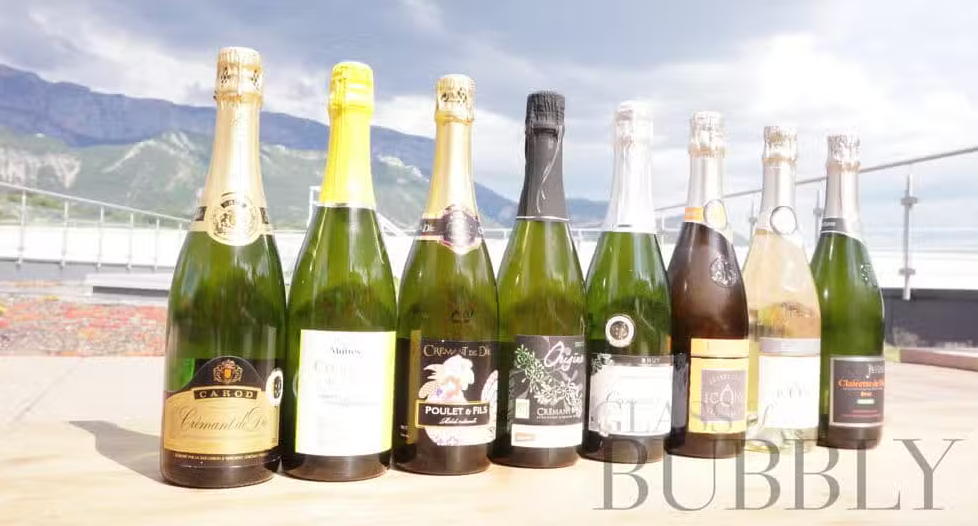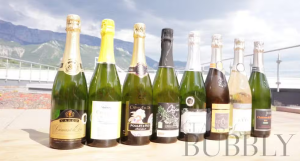
Pic Credit- Glass of Bubbly

Pic Credit- Glass of Bubbly
Posted: Tuesday, 06 August 2024 16:20

The growth in sales of Crémant is part of a long-term trend temporarily interrupted briefly by Covid-19 in 2020, the increase being both in the domestic French market (60%) and exports (40%). The average price per bottle increased in all markets, regardless of the appellation of origin. The total sales of 108m bottles was still only about a third of the sales of Champagne which rules the sparkling wine industry, despite much higher prices.
“Crémant has experienced a decade of growth and has become firmly established in people’s consumption habits, both in France and internationally. The 2023 harvest marks our best ever, totaling 1.03m hL” says Dominique Furlan, Vice President of FNPEC
Crémant vs. Champagne
In layman’s terms Crémant is ‘champagne’ produced outside the Champagne region, with a few other restrictions in terms of the process and grapes. Every sparkling wine is not Champagne but the ‘champagne’ produced outside Champagne, following the specifications of the appellation is termed as Crémant even though the same traditional method (Méthode Champenoise) – second fermentation in the bottle, is followed. Incidentally, no producer outside Champagne, including the Crémant producers may use this term; Traditional Method is what is used universally.
Selling at around €8-10 their price is usually less than half to a third of Champagne and that’s why their sales have been growing steadily. Champagne prices have been rising significantly, thanks to the strong association of Champagne producers- Le Comité Interprofessionnel du vin de Champagne (CIVC), resulting in revenue levels for 2023 remaining consistent with the previous year (over €6bn). Wine Searcher even reports a record revenue of €6.4bn in 2023.
Also Read Champagne records thumping Sales of 322 million bottles in 2021
Eight Appellations of Crémant
Created in 1982, the FNPEC comprises eight appellations: Alsace, Bordeaux, Burgundy, Die, Jura, Limoux, Loire and Savoy- all entering the appellation at different time periods.
Alsace is the most important producer –selling 39.4 million bottles, followed by the Loire (26.7m) and Burgundy (22.3m). Additionally, 10m bottles of Crémant de Bordeaux were sold, 6.2m bottles of Crémant de Limoux, 2.7m bottles of Crémant du Jura in 2023 whereas a relatively small quantity of 368,000 bottles of Crémant de Savoie, and 266,000 bottles of Crémant de Die were sold in the similar period.
Grapes in Crémant
Though FNPEC uses tight control on the name “Crémant” for sparkling wines from the French AOC –appellation system, using various decrees and specifications outlining the conditions for production, different varieties of grapes are allowed to be used in congruence with the region of production.
Crémant de Alsace can use harmonious combination of several grape varieties (Pinot Blanc, Riesling, Pinot Gris, Chardonnay, Auxerrois and Pinot Noir)-or a single grape variety. The majority of Crémant de Bourgogne are produced using Pinot Noir and Chardonnay. Crémant de Loire uses the most popular varieties-Cabernet Franc and Chenin Blanc. Thus the grapes are the most popular varieties grown in each of these areas.
With the consistency in flavours being the common characteristic, one may enjoy 8 different forms of ‘Champagne’ (never call Crémant a Champagne), try any of these appellations, each with different flavours- and they will hit your wallet lighter too.
The lower prices ought to make importers in India give a looksee to these ‘champagnes’- and I say it without Prejudice because of more affordable prices due to high import taxes.
Subhash Arora
